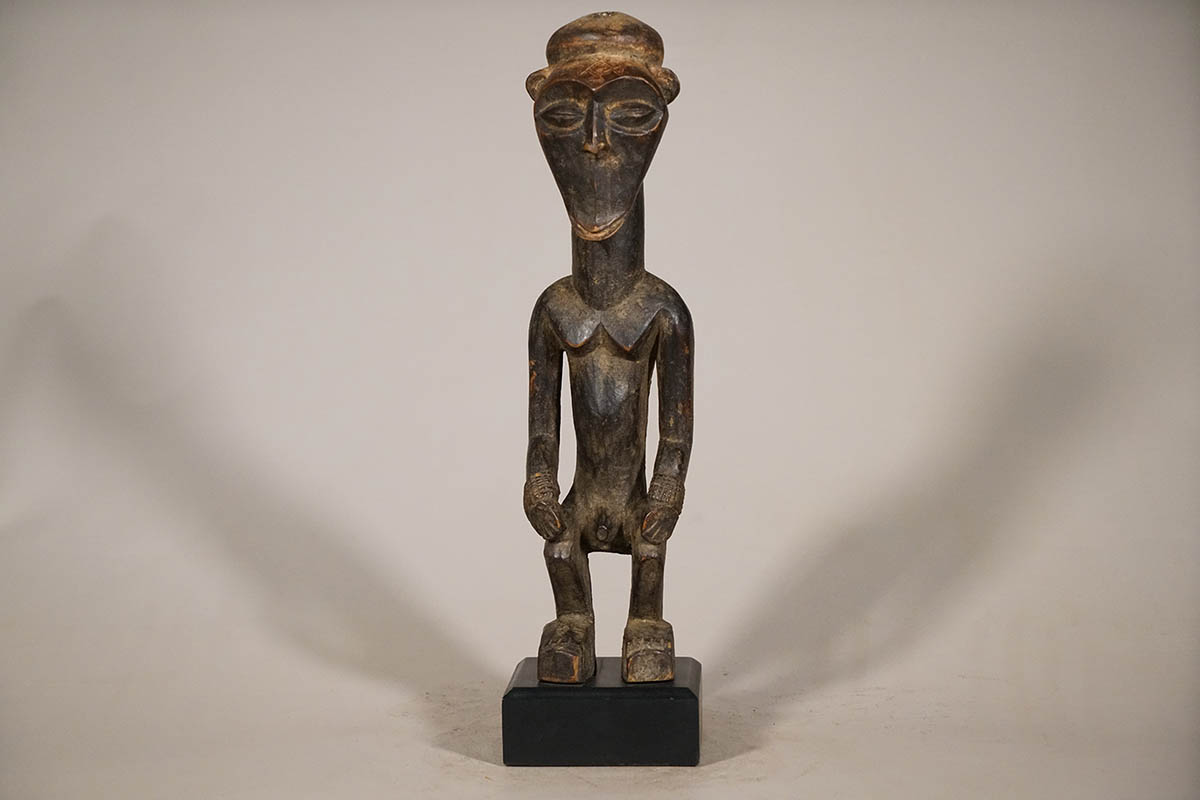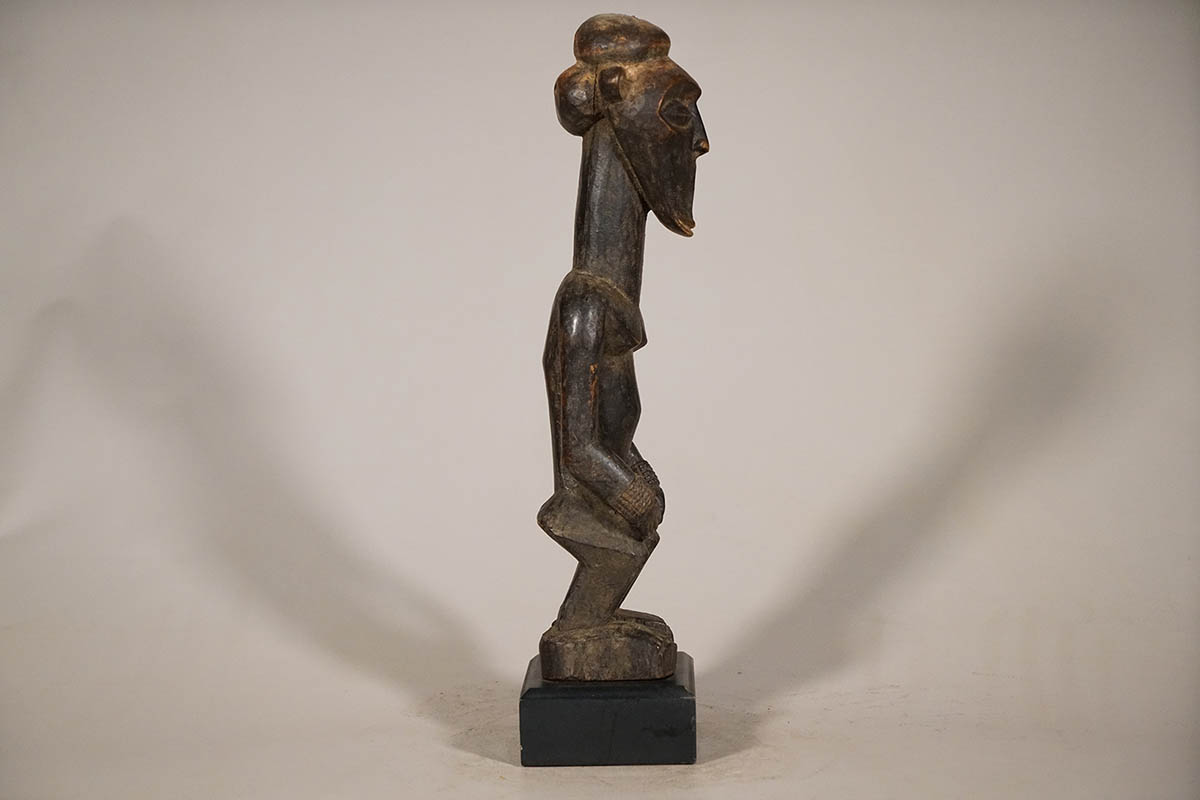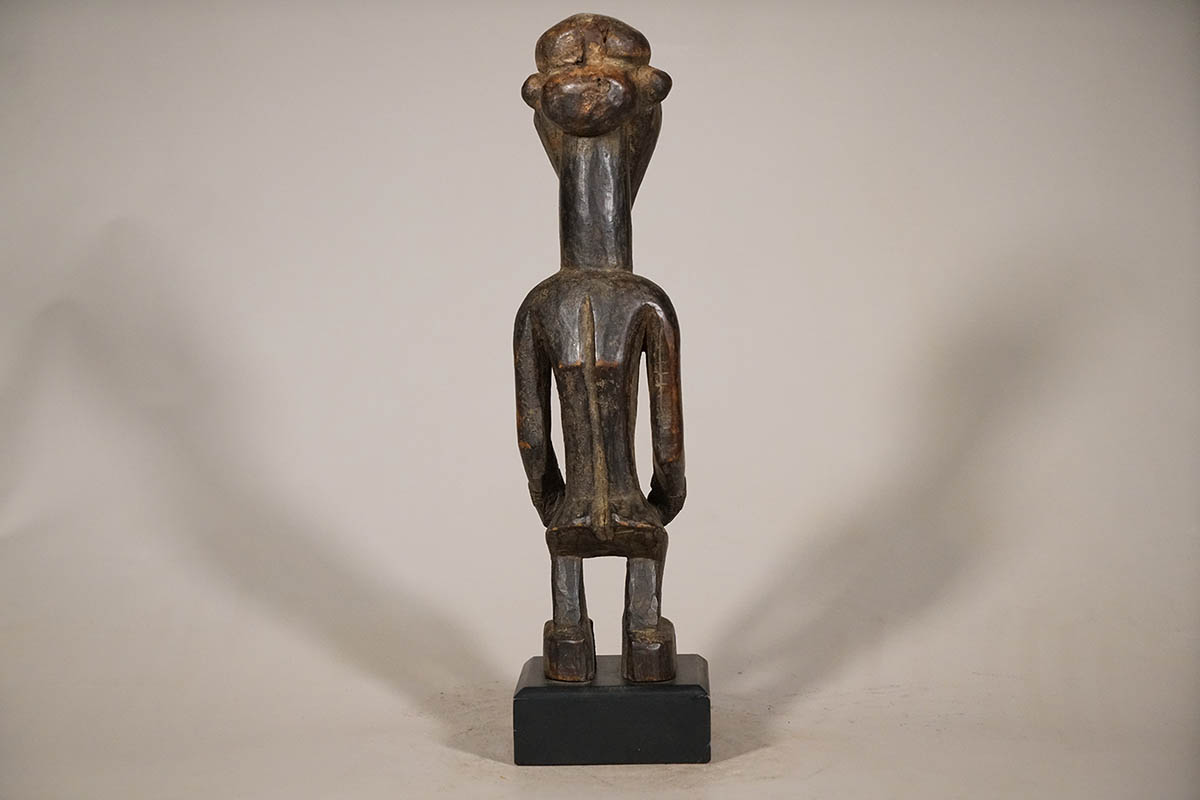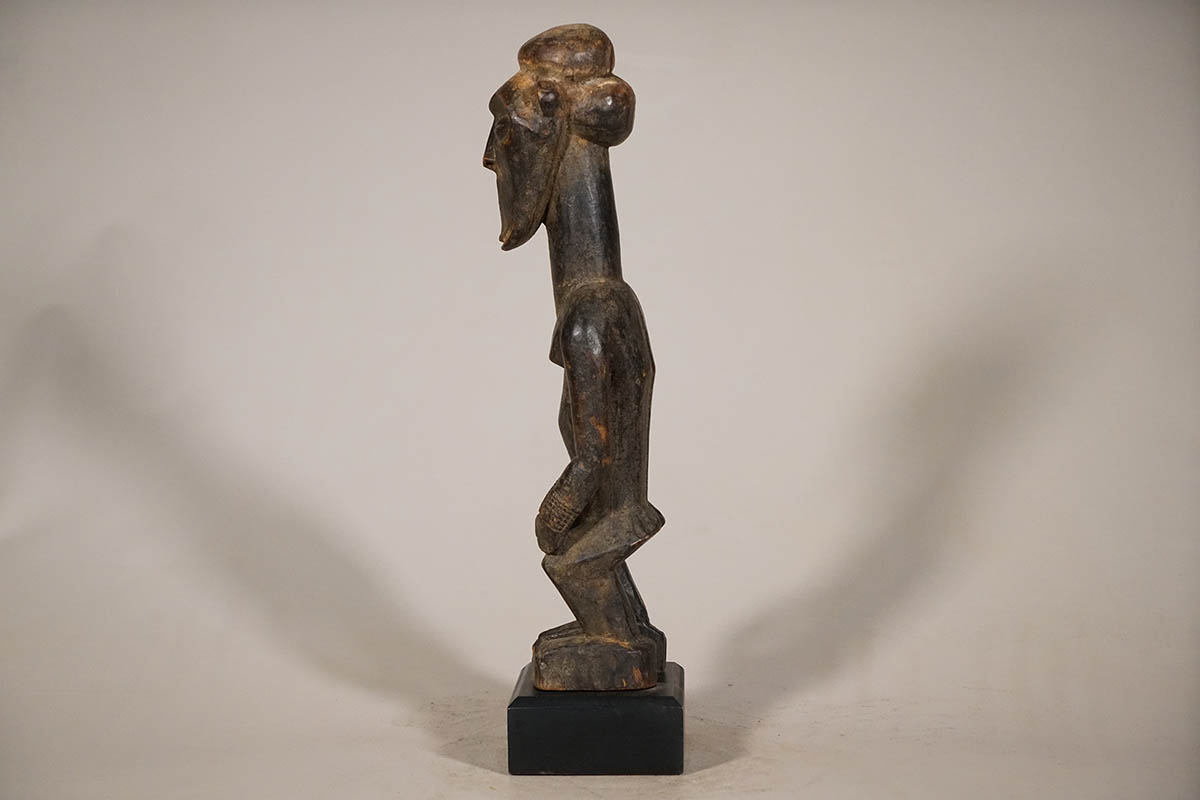This statue depicts a Yaka female with an elongated face. This piece has a wonderful dark brown patina with traces of white pigment on the head. Mounted on a 2″ custom wood base the piece stands 17″ tall and weighs 3.5 pounds.
Delightful Female Yaka Statue 19″ on base – DRC
Original price was: $295.00.$118.00Current price is: $118.00.
Sold

| Type of Object | Figure with base. |
|---|---|
| Country of Origin | DR Congo |
| Ethnicity | Yaka |
| Material | Wood, Pigment |
| Approximate Age | Unknown |
| Height (Inches) | 17” Figure, 19" w/ Base |
| Width (Inches) | 3.5” |
| Depth (Inches) | 3.5” |
| Weight (Pounds) | 3.5 lbs |
| Overall Condition | Possible minor imperfections and wear & tear, including but not limited to scuffing, cracking and minimal chipping. Possible previous repairs. See photos or inquire for more details. |
Tribe Information
About the Yaka People
“Today, the 300,000 Yaka people live along the Wamba River. They migrated from Angola during the 16th century and settled under the control of the Kongo kingdom. In the 18th century their lands were annexed by the Angola-based Lunda people, but by the 19th century the Yaka had regained their independence. Yaka society is tightly structured and headed by a chief of Lunda origin, the Kiamfu, who delegates responsibilities to ministers and lineage chiefs, Unkwagata. Young men are expected to pass through various initiation stages, including circumcision. The tribe lives principally from hunting, although subsidiary farming is undertaken by the women. Yaka artistic tradition is rich and various, but much of it has been informed by their neighbours - the Suku, the Kongo, the Holo and the Teke. Nevertheless, Yaka statues do have common characteristics- an upturned nose and applied pigments.
Source:
Baquart, Jean-Baptiste. The Tribal Arts of Africa. New York: Thames and Hudson Inc. 1998. Print.
Additional Information
About the Yaka Figures
“The majority of Yaka figures were carved in pairs and were associated with Mbwoolo shrines. Their abdomen are hollow, enabling the insertion of fetish material and they are also adorned with bundles of paraphernalia. Yaka figures are multi-functional and sometimes have contradictory roles, for example, they were used to heal and to cause illness.”
Yaka statues were usually placed on shrines and used to inflict pain and to heal. The diviner has a significant role because he owns and activates powerful objects to either protect or harm.






